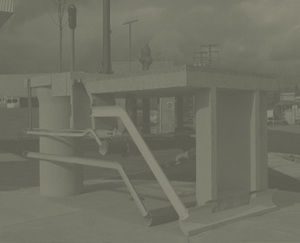



All Rights Reserved. contact: greg@gregsnider.ca
The economy of set and stage design, for theatre (later film, later television, later advertising, later photoconceptualism) is an economy determined by the original proscenium frame: the optics of that oculus, that rectangle, is what we're after. Anything necessary to support this framed image is permitted. But once the image is accomplished, the value of everything required to realize it magically dissolves, whether the disappearing ink is red or black. The required expense (often considerable) is no longer considered, having entered into the deductible metrics of box-office accounting. What we are left with is junk, garbage, trash. Into the dumpster, and into the landfill.
This borders on a pure waste economy. Taken on a global scale, it cannot be measured with corporate trashing, but it is likewise systematic and attitudinal. Today, there is no reason why an economy of performance design cannot be sustainable and ethically considered. This will not make waste go away, but it can be ameliorated.
When I first began designing for the stage in the early 80s, the theatrical waste economy was normal. Within a few years another approach suggested itself, toward the production of real objects that could serve as things in and of themselves, independent of the stage: objects for performance. How this production of durable objects could inflect the character of a production for its audience became increasingly engaging, raising issues of labour and materiality as aspects of the dramaturgy. An intended consequence of this approach was the re-appearance of these made things in other contexts; the prospect of one-time use was diminished.
This borders on a pure waste economy. Taken on a global scale, it cannot be measured with corporate trashing, but it is likewise systematic and attitudinal. Today, there is no reason why an economy of performance design cannot be sustainable and ethically considered. This will not make waste go away, but it can be ameliorated.
When I first began designing for the stage in the early 80s, the theatrical waste economy was normal. Within a few years another approach suggested itself, toward the production of real objects that could serve as things in and of themselves, independent of the stage: objects for performance. How this production of durable objects could inflect the character of a production for its audience became increasingly engaging, raising issues of labour and materiality as aspects of the dramaturgy. An intended consequence of this approach was the re-appearance of these made things in other contexts; the prospect of one-time use was diminished.
Preamble: Performance Design
gregsnider.ca Copyright © 2007 - Greg Snider.